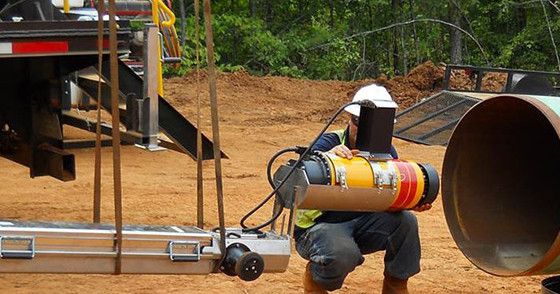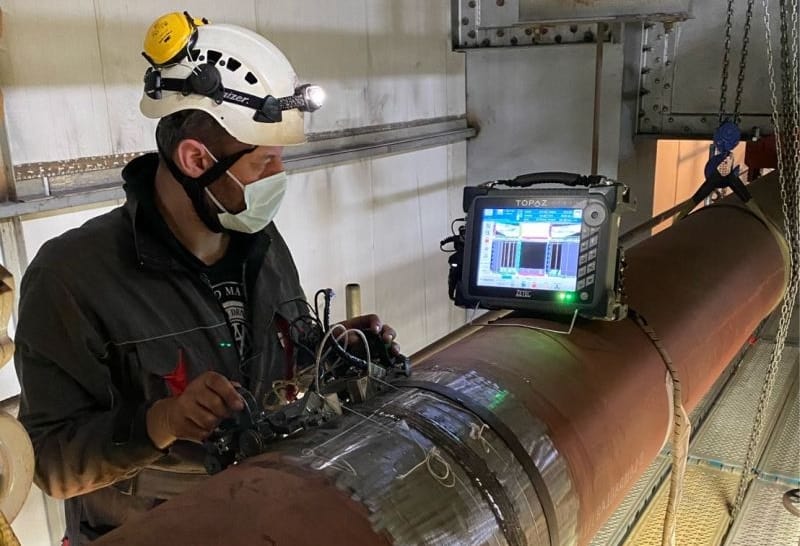Thorough Pipeline Welding Inspection Solutions for Industrial Projects
Wiki Article
Comprehensive Summary of Pipe Welding Evaluation Treatments
Pipe welding assessment treatments play an important role in guaranteeing that bonded links satisfy rigid market requirements and specs. From meticulous pre-welding examinations to thorough post-weld analyses, a distinct evaluation process is important for maintaining the structural soundness of pipes.Pre-welding Inspection Preparations
Before starting the welding process, detailed pre-welding evaluation prep work are important to make certain the stability and top quality of the weld joint. These preparations entail a careful exam of the products to be welded, the welding equipment, and the job environment. By carrying out thorough pre-welding inspection prep work, potential concerns can be recognized and fixed early on, leading to trustworthy and premium weld joints.Welding Procedure Credentials
Extensive pre-welding evaluation prep work lay the structure for the crucial process of Welding Treatment Qualification, making certain the stability and high quality of the weld joint. Welding Treatment Qualification (WPQ) is an essential action in the welding procedure that includes screening and certifying welding treatments to ensure they fulfill particular criteria and demands. The WPQ procedure typically consists of welding treatment specification growth, welding procedure qualification testing, and paperwork of the results.During welding treatment requirements development, crucial details such as the welding process, welding products, joint layout, and welding parameters are defined to develop a comprehensive procedure. Consequently, welding treatment qualification testing is carried out to verify the recommended treatment's integrity. This testing commonly involves welding test discount coupons that go through numerous mechanical and non-destructive tests to analyze the weld's quality and adherence to the specified requirements.
In-process Weld Examination
Throughout the welding process, in-process weld inspection plays a critical duty in ensuring the quality and integrity of the weld joint - Pipeline Welding Inspection. This kind of evaluation entails checking the welding specifications, assessing the weld bead formation, and detecting any type of possible problems or discontinuities as they take place. By carrying out in-process weld examinations, welding drivers can without delay attend to any concerns that may arise, consequently ensuring and protecting against more issues that the final weld meets the needed specsUsual methods used for get redirected here in-process weld evaluation include aesthetic evaluation, fluid penetrant screening, magnetic particle screening, ultrasonic screening, internet and radiographic screening. Generally, in-process weld evaluation is important for preserving the high quality and reliability of welded pipes.
Non-destructive Testing (NDT)
Non-destructive Screening (NDT) is an essential method employed in pipe welding examination to assess the honesty of weld joints without creating damages to the bonded structure. By utilizing numerous NDT methods, assessors can evaluate the quality of welds and recognize any kind of problems or gaps that might endanger the structural stability of the pipe. Usual NDT approaches made use of in pipe welding inspection include Radiographic Testing (RT), Ultrasonic Screening (UT), Magnetic Particle Checking (MPT), Liquid Penetrant Screening (LPT), and Visual Testing (VT)RT involves using X-rays or gamma rays to create photos of the internal framework of the weld, permitting inspectors to detect defects such as porosity, fractures, or insufficient blend. UT makes use of high-frequency sound waves to identify defects beneath the surface of the weld, supplying thorough info about the dimension and location of issues. MPT and LPT are used to recognize surface-breaking flaws by applying magnetic particles or penetrant liquids to the weld area. Additionally, VT involves aesthetic inspection of welds to determine any kind of noticeable imperfections.
Post-weld Assessment and Documentation


Paperwork of post-weld assessment searchings for is necessary for keeping high quality control records and guaranteeing conformity with market standards and guidelines. Detailed reports should consist of info concerning the inspection techniques made use of, the area and nature of any original site type of problems located, and any type of restorative activities taken - Pipeline Welding Inspection. Correct documentation not just functions as a record of the weld's high quality however also help in future maintenance and assessment processes
Verdict

In verdict, pipeline welding inspection treatments play a crucial role in ensuring the top quality and integrity of welds. Overall, adherence to proper inspection protocols is key to the success of pipeline welding jobs.
From careful pre-welding assessments to detailed post-weld analyses, a well-defined inspection procedure is essential for preserving the architectural soundness of pipelines. By conducting in-process weld assessments, welding drivers can immediately address any concerns that might emerge, thereby making sure and protecting against additional issues that the last weld meets the required specifications.
Usual approaches made use of for in-process weld inspection include aesthetic inspection, liquid penetrant testing, magnetic fragment testing, ultrasonic screening, and radiographic screening.Non-destructive Screening (NDT) is a crucial technique used in pipe welding inspection to examine the stability of weld joints without causing damages to the welded framework. Post-weld assessment entails various techniques to evaluate the welds for problems, including aesthetic examination, dye penetrant testing, magnetic fragment screening, ultrasonic screening, and radiographic testing.
Report this wiki page